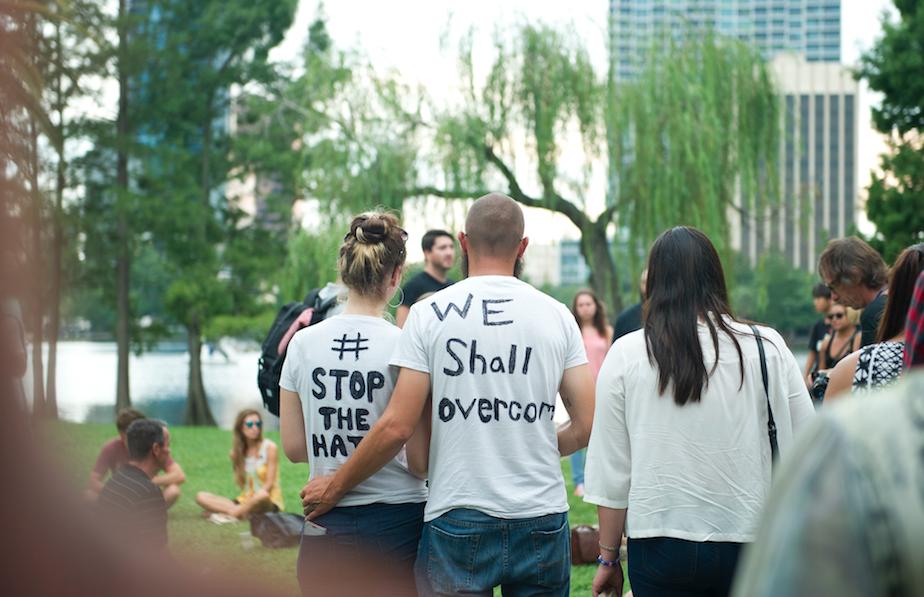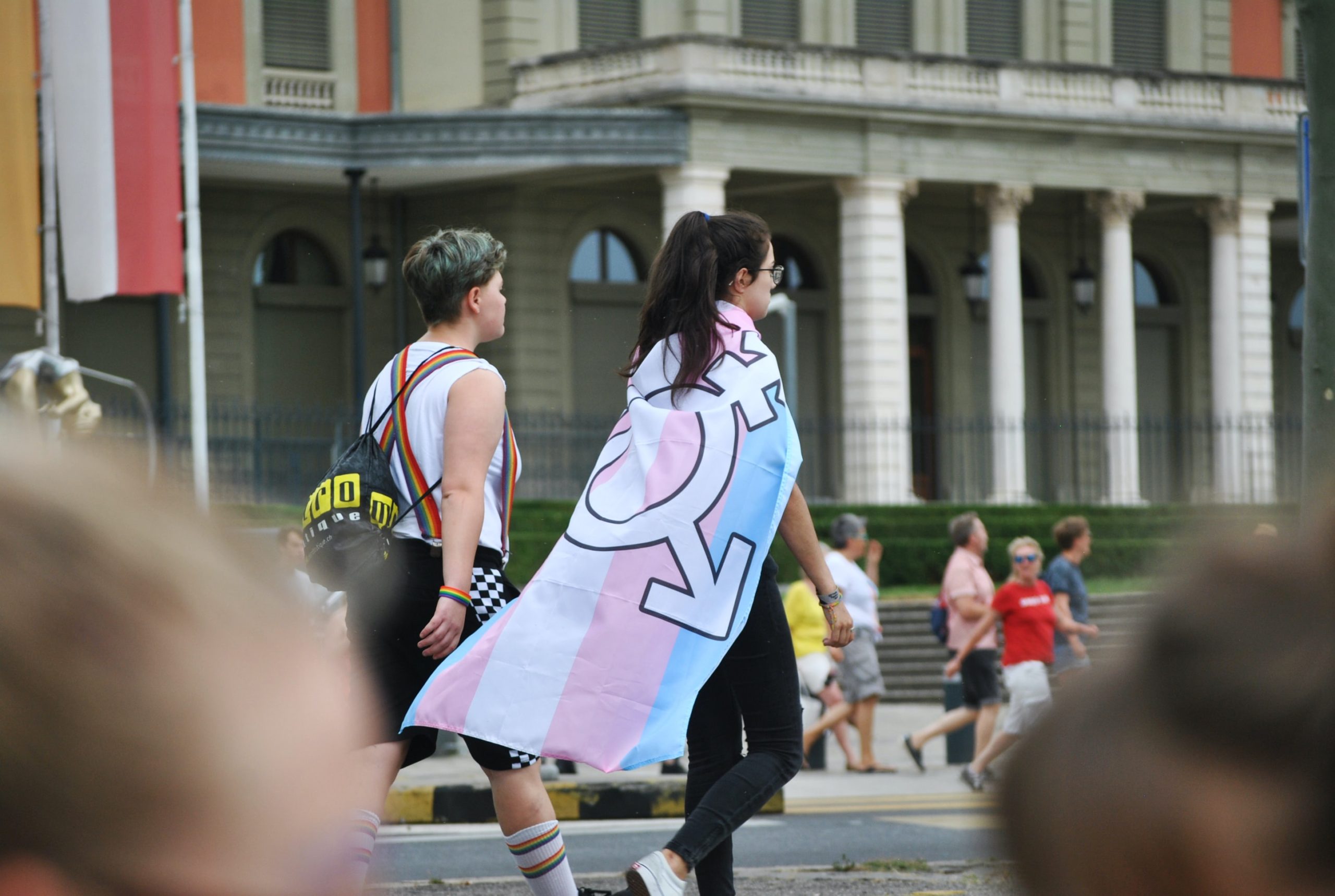By Sam Cleare
In the thick of LGBT Pride celebrations on Sunday, June 12th, a gunman opened fire at Pulse, an Orlando LGBT nightclub, murdering 49 and injuring over 50 more. This mass shooting, the deadliest in modern U.S. history, occurred during the club’s Latinx[1] Night, an event featuring transgender women of color and drawing a disproportionate amount of LGBT Latinos and other people of color.
Shortly after the incident, news sources released more and more information connecting the shooter, Omar Mateen, to the Islamic State. While many media sources foster Islamophobic sensationalism with anti-Muslim rhetoric and demand for strict immigration policies, the underlying issue that harms many Americans continues to be underreported. By blaming the entire massacre on radical Islam and the treatment of the LGBT community in the Middle East, the media ignores a long history of injustice towards this community within the United States.
Violence against LGBT Americans, especially transgender women of color, has been taking place long before the Orlando attack without any association to Islamic extremism. Even though LGBT bars have served as safe havens for many, they have also been the targets of cruel homophobic and transphobic violence, including police brutality, which resulted in riots that sparked the gay rights movement. In 1973, an arsonist set fire to the upstairs of a New Orleans LGBT bar, killing 32 individuals. In 1997, The Otherside Lounge, a lesbian bar in Atlanta, was bombed. In 2013, someone set fire to an LGBT club in Seattle. These are only a few examples of the many hateful acts that have targeted these LGBT sanctuaries.
In the past, news sources barely covered these attacks, and Federal law did not specifically incriminate violence against LGBT persons until 2009. Unquestionably, blaming radical Islam has greatly influenced the media’s engagement.
Thousands of hate crimes against LGBT individuals occur every year. Transgender[2] and gender nonconforming[3] individuals, especially, face violence and discrimination just about everywhere, including in childhood homes, within school systems, in the eyes of judges, and more. Anti-transgender bias influences many areas of life for these individuals.
The National Gay and Lesbian Task Force and the National Center for Transgender Equality conducted a survey including over 6,000 transgender and gender nonconforming individuals from all 50 states, the District of Columbia, Puerto Rico, Guam, and the U.S. Virgin Islands. This survey reported that the respondents were four times more likely to earn a household income of less than $10,000.00 a year in comparison to the general population. About 40 percent of the survey respondents had also attempted to commit suicide, a startlingly high rate. Not to mention, the respondents accounted for far more cases of homelessness than the general population. Homeless transgender and gender nonconforming individuals face high levels of mistreatment and harassment due to their vulnerability in public settings and to police abuse. About half of the sample reported having been treated by doctors uninformed on how to provide adequate healthcare to transgender patients; this already vulnerable population often has to teach physicians how to properly care for them, yet another barrier with dire implications.
Schools also largely affect the lives of many LGBT Americans. Within schools, those who expressed trans-gender identities or gender nonconformity also experienced unacceptably high levels of harassment, physical assault, and sexual violence when compared to straight and cisgender students. Due to these conditions, almost one-sixth of the sample members of the survey left school, in both K-12 and higher education. Peer abuse and harassment create damaging effects, and this study found that abuse and harassment by teachers worsened the health and created other negative consequences for the respondents.
The 2013 National School Climate survey began in 1999 in order to track the school experiences of America’s LGBT youth, who were absent in other national studies. This study found that over half of all LGBT students found school to be dangerous because of their sexual orientation, and over 30 percent felt unsafe because of their gender expression. In fact, over 30 percent of the sample had missed at least one day of school in the past month due to their discomfort at school. Over 90 percent of the students felt uncomfortable due to anti-LGBT language used at school as well. Discrimination caused the sample to have significantly poorer GPAs, lower self-esteem, and depression.
Student bullying was not the only issue. While statistics concerning verbal and physical harassment were high amongst the survey respondents, over 60 percent of the individuals stated that school staff wouldn’t help them when they reported the incidents. Over half of the respondents reported experiencing discriminatory LGBT policies at school, and a large range of the sample reported that their sexual orientation caused them to receive more discipline for public displays of affection; to be prevented from attending a school dance with another individual of the same gender; to not be allowed to write about LGBT topics, or even wear clothing or begin clubs that support LGBT individuals. The transgender respondents also reported issues with being able to use their preferred name, locker room, and bathroom.
In schools where administrations allowed students to create Gay-Straight Alliances or similar student clubs, the sample reported that they were less likely to hear homophobic language in school (57.4 percent compared to 71.6 percent) and that staff was more likely to intervene when hearing homophobic remarks. An LGBT inclusive curriculum increased the respondents’ interest in studying STEM or social science in college, a feeling of connection to the community, school attendance, safety, and the likelihood of reporting that their classmates were somewhat or very accepting of LGBT people (75.2 percent compared to 39.6 percent).
It is important to recognize the devastating effects of structural racism as well. The comprehensive study discussed earlier found that, while living with the effects of anti-transgender bias was common amongst the entire sample of the survey, transgender people of color experienced more discrimination than the white participants. At the time of the survey, respondents of color experienced four times the rate of unemployment in comparison to the general population, including both transgender and cisgender individuals. Respondents of color were also disproportionately affected concerning police brutality, homelessness, and sexual assault. Last year alone, 23 transgender women (that we know of, because official records are not kept), a majority being women of color, were murdered.
In order to move forward and respect the lives of the Orlando tragedy’s victims, we cannot blame this event solely on terrorism and ignore the discrimination that the LGBT community continues to battle. Although other policy changes may be recommended regarding gun control and other possible means of eliminating mass violence, we cannot ignore the injustices that the LGBT community, especially transgender women of color, deal with every single day. The struggles that these people face reflect the discriminatory culture that contributes to the ideologies behind horrible massacres.
While we may not see the smaller accounts of daily prejudices on newsstands, we must acknowledge that we have a long way to go to ensure equal treatment for the LGBT community in U.S. school systems, hospitals, workplaces, and more. The data clearly demonstrates that the LGBT community is still in crisis, and those that are marginalized on multiple fronts — like transgender women of color — are forced to focus on survival.
It is also important to not victimize these individuals or continue to isolate and insult them with anti-LGBT legislation. Rather, legislators should consider the concerns of all Americans, working to improve conditions within the country instead of scapegoating external factors. For example, U.S. school systems could provide more support for LGBT students in order to positively influence students at a young age. More programs need to promote the safety of trans-women of color instead of leaving them to the violence of police brutality. Homeless shelters and medical clinics should be readily available and accessible to these individuals as well. If the Pulse massacre does not lead us to addressing the homophobic and transphobic American culture that inspired it, we have failed as a nation.
[1] Latinx is an engendered way of referring to all Latino people.
[2] Transgender is a general term used to describe people whose gender identity differs from the sex they were assigned at birth.
[3] Gender nonconforming refers to people who do not follow other people’s ideas or stereotypes about how they should look or act based on the sex they were assigned at birth.


